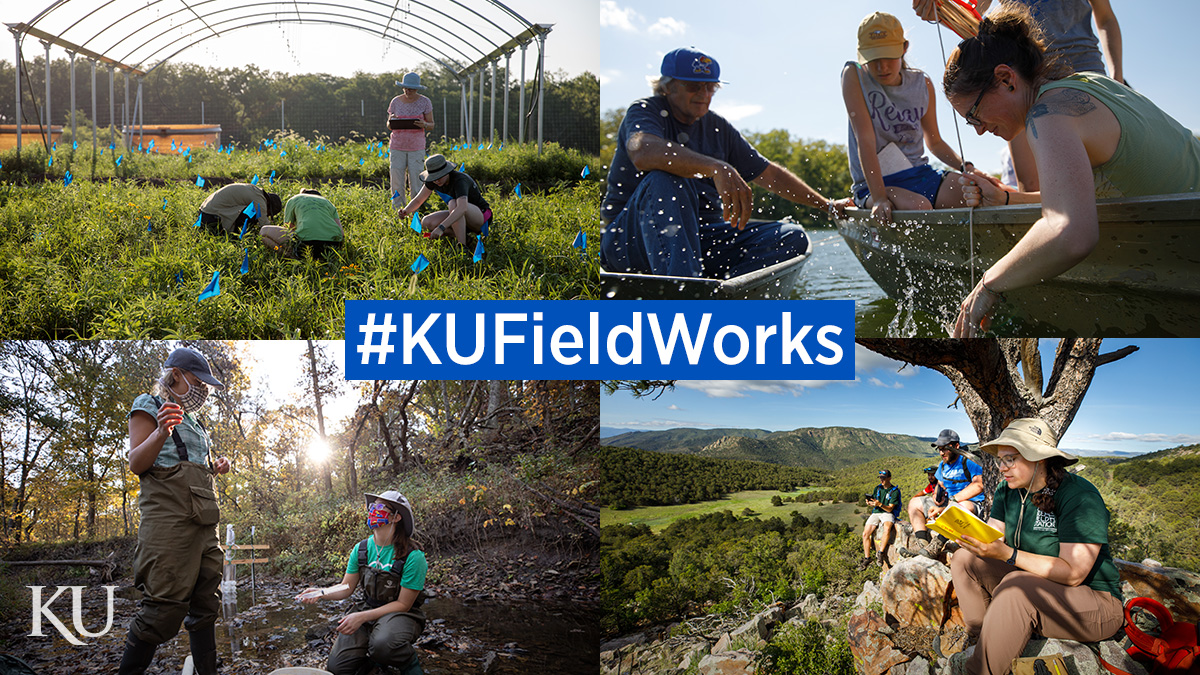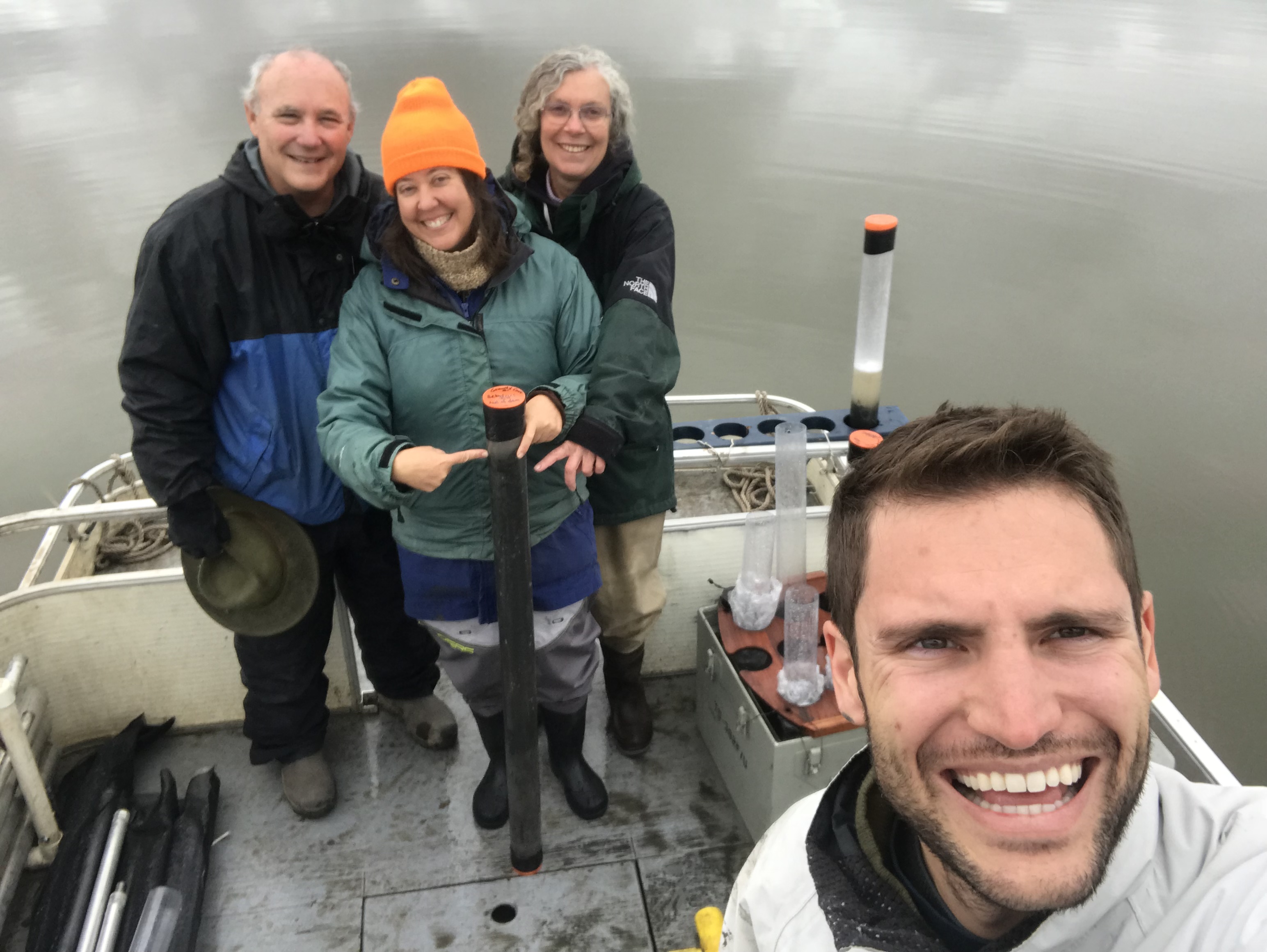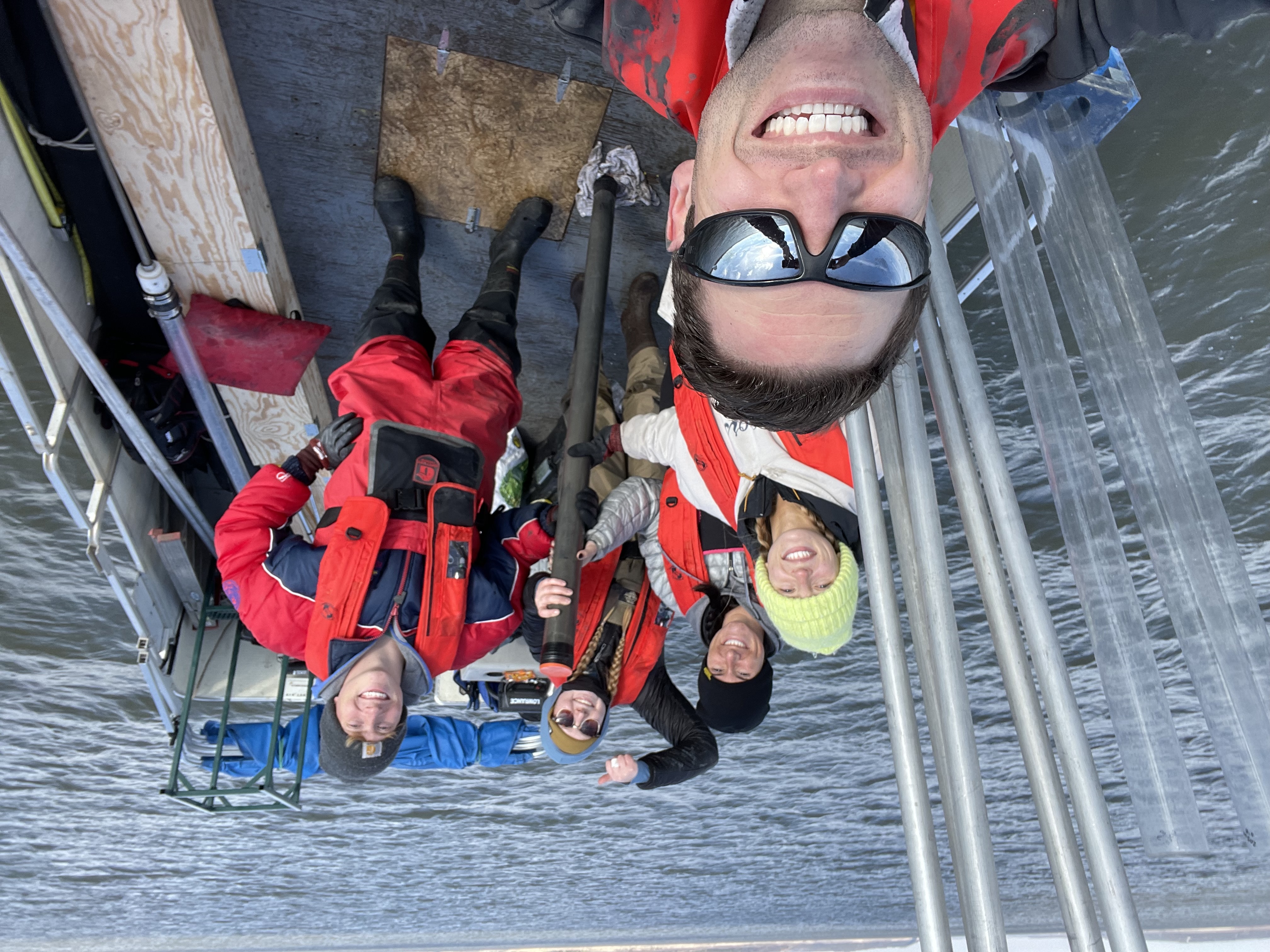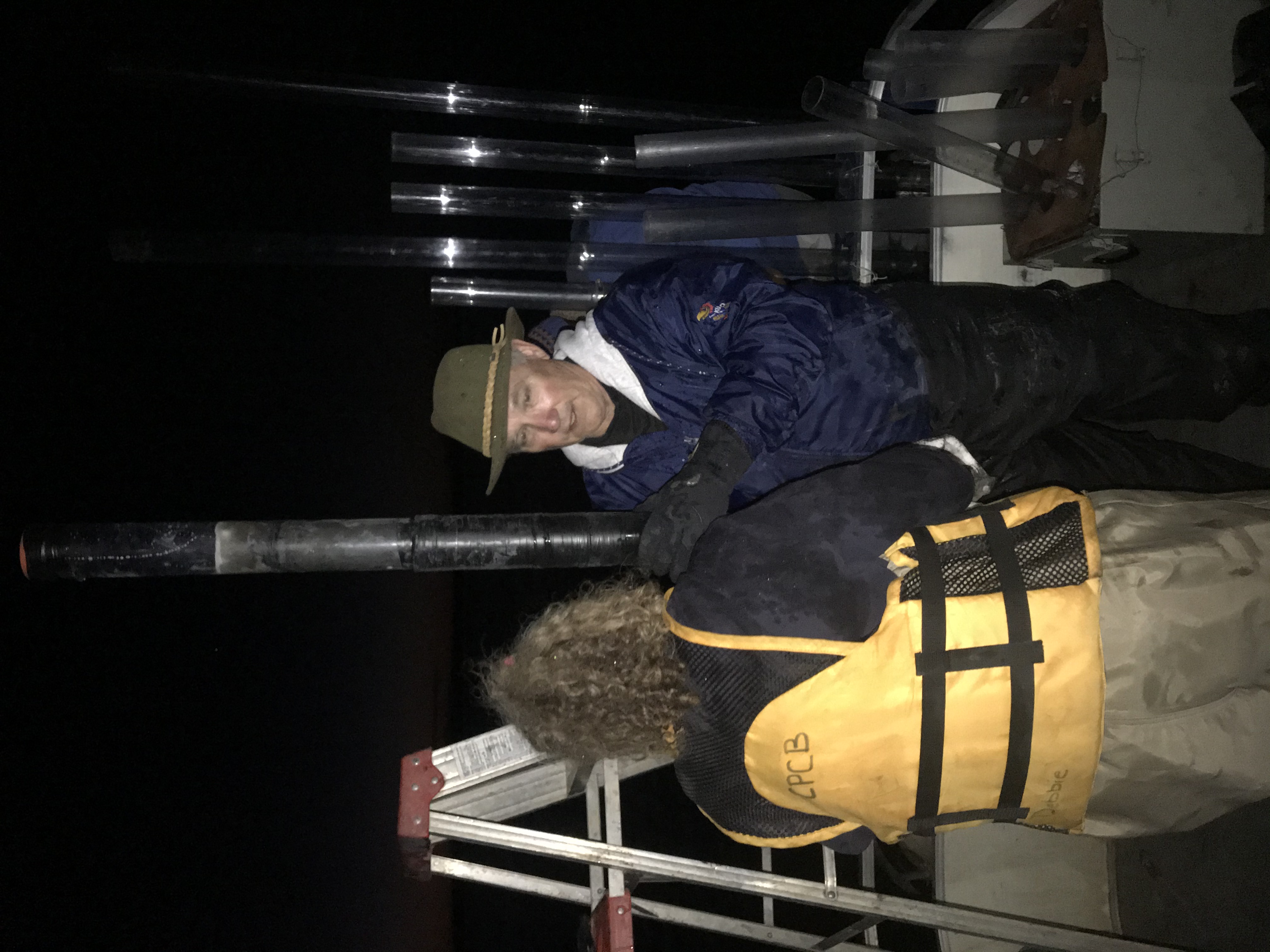#KUFieldWorks: Predicting future algae blooms to preserve safe drinking water

Q&A with assistant research professor Ted Harris
Ted Harris and a team of faculty, student and staff are examining long-term water quality changes in large Kansas lakes, especially changes related to blue-green algae, which can cause harmful algal blooms (HABs). Under certain conditions, cyanobacteria, colloquially known as blue-green algae, can grow rapidly in lakes. When too much of this algae is present, it releases toxins that can harm humans and other animals.
Harris is an assistant research professor with the Kansas Biological Survey & Center for Ecological Research. He led a number of trips this summer throughout the lakes within the Kansas River basin, including lakes Sebelius, Webster, Kanopolis, Milford, Waconda, Tuttle Creek, Perry and Lovewell.
Harris and his team use sediment to analyze the historical patterns of HABs, which can render water unsafe for consumption. Understanding when and why these blooms take place can help the state forecast and prevent them in the future.

What methods, approaches, experiments, etc. are you using?
Each year, sediment and billions of dead algal cells settle to the bottom of Kansas lakes, continuously covering last year’s deposits. The dead algal cells slowly degrade within the sediment, but leave behind pigments unique to distinct algal taxa – including the blue-green algae that comprise Kansas’s HABs. Because older sediments are buried by more recent sediments and dead algae, the cores serve as a layered timeline of algal community changes and HAB events over the entire life of the lake, which help us reconstruct water quality patterns throughout the lake’s past.
Why does your study matter to your field or for society?
The Kansas River basin serves as a primary drinking water supply for nearly 1 million Kansans, but the quality of water in many lakes is threatened by blue-green algae. There are currently no projections about what the water quality will be in the Kansas River basin’s lakes and rivers for the next several decades. The reconstructed historical water quality patterns help us understand when and why HABs increased in our lakes, and will ultimately be used to project future water quality in the Kansas River basin.

What do you enjoy most about being in the field?
Getting to be on lakes is always enjoyable. We usually conduct research on weekdays, so few people are out on the lake when we visit. It is kind of like having the lake to ourselves!
What are some memorable (funny, scary, surprising, etc.) moments from the field?
Because we have been able to study many of the lakes in Kansas, we’ve been able to go to some of the most awesome Kansas sights along the way. This includes the World's Largest Ball of Twine, Nicodemus, Rock City, Alcove Spring, and even visiting the site of Waconda/Great Spirit Spring – which is now underwater in Waconda Lake.

When is fieldwork frustrating, challenging or overwhelming?
Kansas is known for its windy days. High winds also complicate and limit our work on lakes. In one instance, we had to delay our work on Kanopolis because of high winds during the day, but ended up being able to complete the work at night when it was less windy. With starlight as guidance, we were able to collect a sediment core that went back to before 1948 – when the lake was created.
How does fieldwork complement the work you do elsewhere?
My main goal is to help understand and improve water quality in Kansas. The only way to find out if water quality is getting better, worse or staying consistent is to get out on lakes and find out!
First photo: University of Kansas researchers conduct fieldwork in prairies, rivers, streams and mountains. The #KUFieldWorks series follows researchers on their fieldwork adventures.
Second photo: Kansas Biological Survey assistant research professor Ted Harris, right, and colleagues sample sediment from lake Sebelius. The other Kansas Biological Survey researchers pictured from left to right are Scott Campbell, Debbie Baker and Jennifer Delisle.
Third photo: Assistant professor Ted Harris, left, and undergraduate students Rebecca Kessler, Karah Kniola, Adeline Kelly and Luke Ungerer (left to right) pose with a sediment core they collected from Tuttle Creek.
Fourth photo: Jennifer Delisle and Scott Campbell hold a sediment core they collected from Kanopolis lake at night due to high winds during the day.